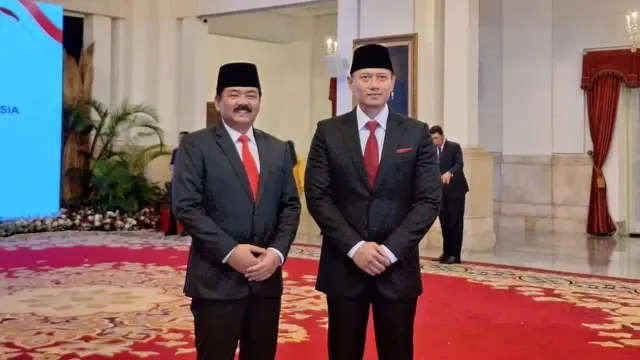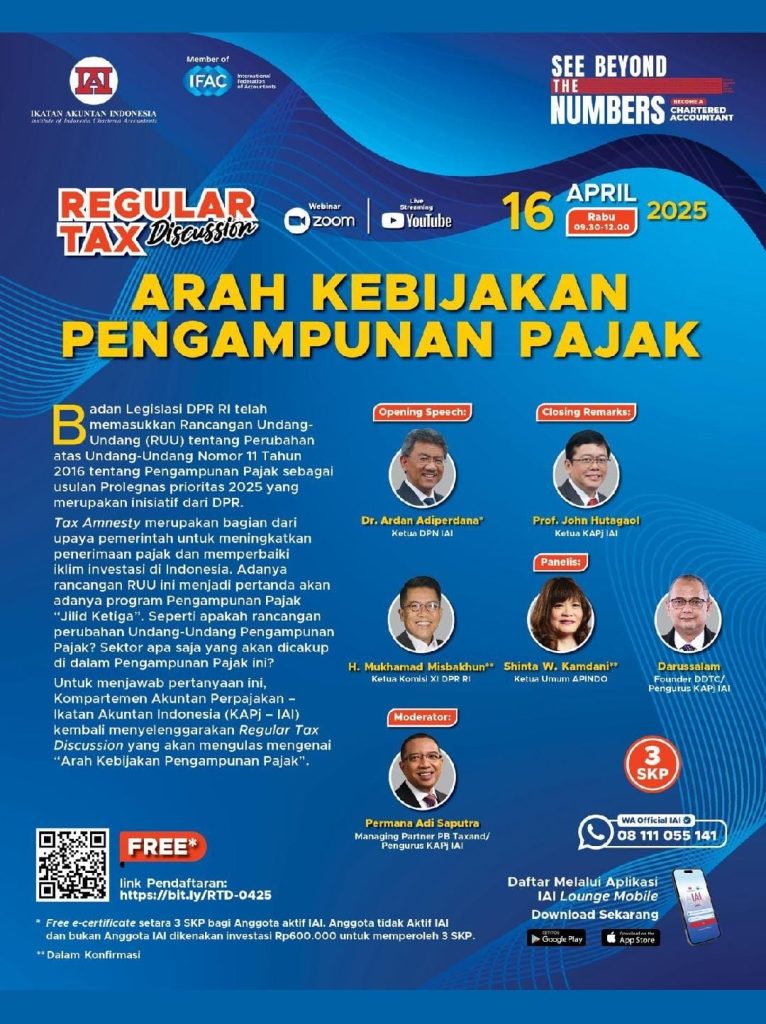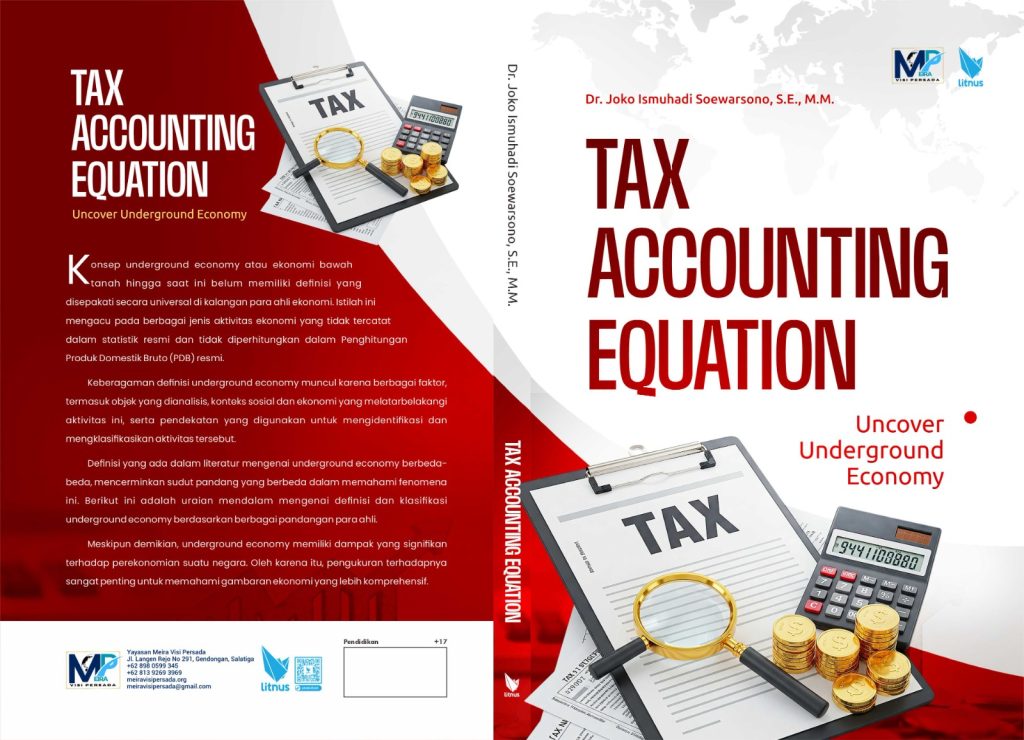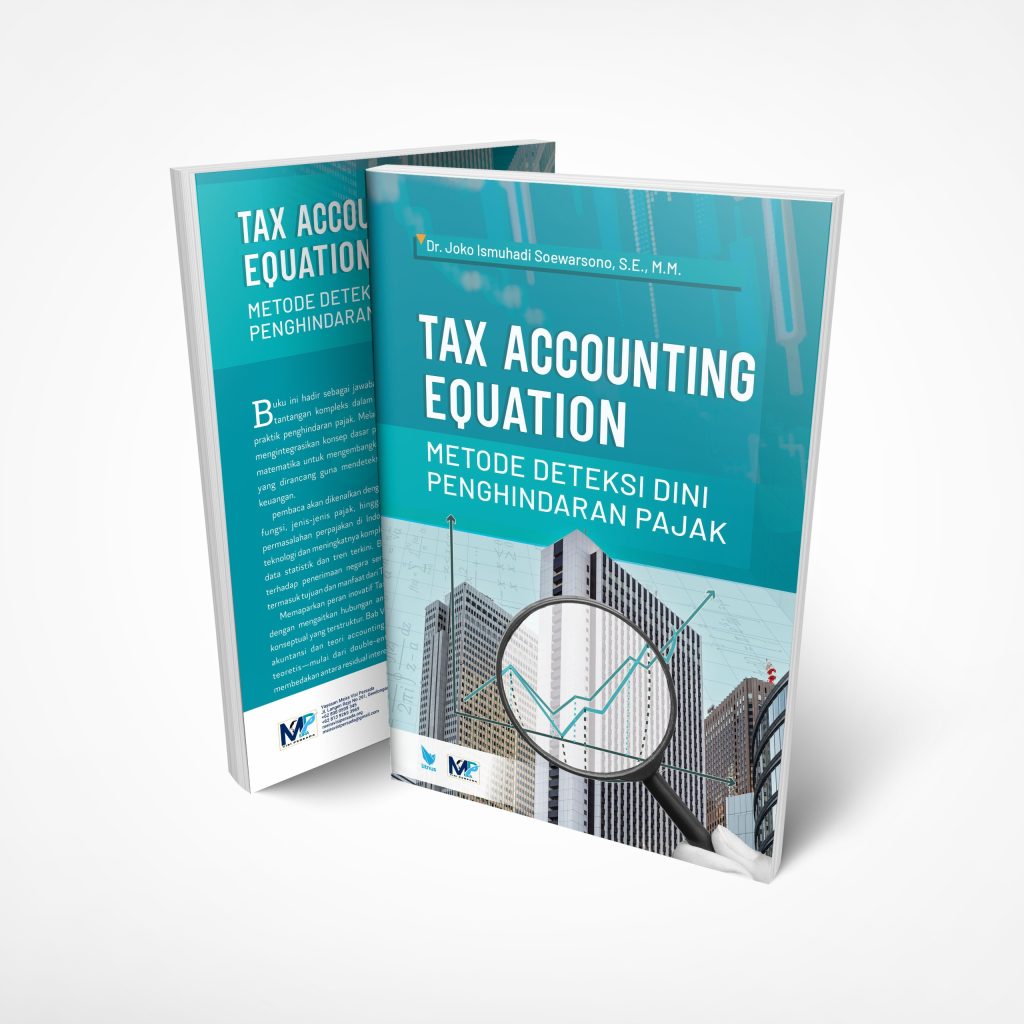
Integrating Fiscal Innovation with Balinese Philosophy for a Harmonious Indonesia
- Ekonomi
Thursday, 05 June 2025 04:31 WIB
Jakarta, fiskusnews.com:
Executive Summary
Indonesia stands at a pivotal juncture in its fiscal evolution, confronting persistent challenges such as a modest tax ratio, widespread non-compliance, and a significant informal economy. This report details a transformative framework that strategically integrates advanced tax administration systems—Dr. Joko Ismuhadi’s Tax Accounting Equation (TAE), the Self-Assessment Monitoring System (SAMS), and the Core Tax Administration System (CTAS)—with the deeply rooted Balinese philosophy of Tri Hita Karana. This approach transcends mere technical enhancement, aiming to cultivate not only robust economic prosperity but also a more harmonious and accountable society. By aligning modern fiscal tools with ancient philosophical tenets, the framework addresses the fundamental trust deficit in Indonesian taxation, fostering ethical conduct, promoting social justice, and ensuring responsible stewardship of national resources. This holistic synergy positions Indonesia to achieve sustainable development and enhanced national resilience, offering a potentially pioneering model for culturally informed public policy.
1. Introduction: Forging Harmony in Indonesia’s Fiscal Future
1.1. The Imperative for Tax Reform in Indonesia: Addressing Fiscal Challenges and Enhancing Compliance
Indonesia’s tax system has undergone significant improvements in administrative effectiveness and revenue collection over the past decade. However, despite these commendable efforts, the nation’s overall tax take remains modest, hindering critical investments in social protection and infrastructure. A key indicator of fiscal performance, Indonesia’s tax-to-GDP ratio has consistently lingered between 10% and 12% over the last decade, registering 10.31% in 2023 and 10.02% in October 2024. This figure falls short of the government’s ambitious target of 11.2%-12% by 2025 and is considerably lower than the Organization for Economic Co-operation and Development (OECD) average, which exceeds 30%. This persistent low ratio points to a structural weakness in Indonesia’s capacity for revenue mobilization.
Several critical challenges contribute to this subdued fiscal performance. Firstly, the nation experiences substantial revenue leakage stemming from widespread tax non-compliance. Estimates indicate that Indonesia loses approximately IDR 546 trillion annually due to non-compliance, with significant gaps observed in Value Added Tax (VAT) at 43.9% and Corporate Income Tax (CIT) at 33% of total obligations. Secondly, a pervasive informal sector further complicates revenue collection; in 2024, roughly 47% of Indonesia’s economy operated outside the formal tax base, making it exceedingly difficult to monitor and collect revenue from. Thirdly, sophisticated tax avoidance and evasion tactics are prevalent. Companies frequently employ strategies such as thin capitalization, transfer pricing, controlled foreign corporation (CFC) rules, treaty shopping, and the utilization of tax havens to minimize their tax liabilities. While tax avoidance operates within legal frameworks, it raises significant ethical concerns, whereas illegal tax evasion, involving activities like underreporting income or falsifying documents, carries severe penalties, including substantial fines and imprisonment.
A deeper examination reveals that low tax morale and a prevailing lack of public trust represent profound underlying issues. Tax morale in Indonesia is significantly shaped by perceptions of governance quality, fairness, and overall social trust. Historical experiences have left a psychological imprint, with public perceptions of taxation often rooted in concepts of “coerced tribute” or “extortion” rather than a civic duty or national contribution. This historical narrative contributes to a pervasive distrust that actively impedes voluntary compliance. Lastly, administrative inefficiencies and the inherent complexity of the tax system exacerbate these challenges. Outdated manual procedures, fragmented data, and intricate tax rules contribute to administrative burdens and taxpayer confusion, further suppressing compliance rates.
The persistently low tax revenue has broad socio-economic ramifications, narrowing Indonesia’s fiscal space and severely constraining the government’s capacity to fund crucial strategic development programs in vital sectors such as infrastructure, education, and healthcare. This fiscal constraint often leads to delays, scaling back of projects, or budget cuts, directly impacting public welfare. In the long term, an over-reliance on debt increases the national debt burden and renders the economy vulnerable to global economic shocks, thereby impeding sustainable growth. Addressing these multifaceted challenges necessitates a comprehensive and culturally attuned reform agenda. A critical understanding emerges that the challenge is not merely technical or economic but is deeply embedded in a societal trust deficit. If citizens do not perceive that their tax payments are utilized effectively for public welfare, voluntary compliance will inevitably remain low. This observation underscores that any tax reform aiming for sustainable, long-term success in Indonesia must prioritize the rebuilding of public trust and tax morale. This means that cultural integration, particularly through philosophies like Tri Hita Karana, is not a supplementary or optional component but a fundamental strategy essential for transforming taxpayer perceptions and fostering a genuine culture of compliance. Without addressing this foundational trust deficit, even the most technologically advanced systems may struggle to achieve their full potential.
1.2. Tri Hita Karana: An Enduring Philosophy for Holistic Well-being
Tri Hita Karana, a profound traditional philosophy originating from Bali, Indonesia, literally translates to the “three causes of well-being” or “three reasons for prosperity”. It serves as a guiding principle for life on the island, advocating for a harmonious existence achieved through three fundamental and interconnected relationships. This ancient wisdom functions as a spiritual compass, offering guidance through life’s complexities.
The philosophy is structured around three interconnected pillars:
- Parhyangan (Harmony with God/Divine Principles): This pillar embodies the essential relationship between humans and the divine, or personal spirituality. It encourages devotion, gratitude, and profound respect towards higher powers, manifested through regular rituals, offerings, and an unwavering adherence to ethical conduct. This practice cultivates a deep sense of peace, humility, and spiritual well-being within individuals.
- Pawongan (Harmony among Humans/Social Justice): This pillar underscores the critical importance of human interaction and social cohesion. It promotes mutual respect, consideration, and active assistance among community members, deeply rooted in the “Tat Twam Asi” principle, meaning “I am you and you are me”. This concept fosters a collective belief that “they all are one,” nurturing a profound sense of shared humanity. This principle is visibly expressed through communal activities such as Gotong Royong (mutual cooperation), which is a common and powerful demonstration of the strength and unity within Balinese society. It necessitates an appreciation for humanity, valuing mutual respect, and upholding fundamental human rights.
- Palemahan (Harmony with Nature/Environment and Broader Societal Resources): This pillar calls for a deep and inherent respect for the natural environment. It acknowledges humanity’s integral connection to Mother Nature and recognizes that all good things enjoyed by humans are unconditionally supported by the earth. Consequently, it advocates for sustainable practices and urges the avoidance of actions that deplete natural resources, thereby ensuring the well-being of both current and future generations. This philosophy is tangibly reflected in Bali’s sustainable practices, including traditional farming methods, the preservation of water bodies (such as the renowned subak irrigation system), and architectural designs that seamlessly integrate with the natural surroundings. The Balinese people inherently understand the importance of balance, ensuring that their interactions with and reshaping of the environment contribute positively to the ecosystem rather than causing harm.
Tri Hita Karana is not merely an abstract concept; it is profoundly embedded in daily life in Bali. It guides rituals, communal practices like gotong-royong, the spatial organization of Balinese architecture, and the sophisticated subak irrigation system, which stands as a prime example of cooperatively managed environmental harmony. The philosophy is widely credited for Bali’s overall prosperity, its consistent record of development, effective environmental practices, and the high quality of life enjoyed by its residents. A disruption or imbalance in any of these three relationships is believed to lead to societal disarray or “disease”. For instance, a lack of respect for nature (Palemahan) could be perceived as inviting divine displeasure, thereby unsettling the balance across all realms. The consistent application of this philosophy is believed to lead to a harmonious human existence, characterized by devotion to the divine, love for the environment, and peaceful coexistence with others. This comprehensive approach to well-being provides a robust framework for societal organization. It offers a practical, time-tested model for holistic sustainable development and the cultivation of strong social capital. By integrating this philosophy into tax policy, Indonesia is not merely adding a cultural veneer but is tapping into a deeply ingrained societal wisdom that can foster collective responsibility, environmental stewardship, and social cohesion. This transforms taxation into a powerful mechanism for achieving broader national goals, moving beyond purely fiscal targets to build a more resilient and harmonious society, a critical differentiator from purely Western-centric governance models.
1.3. The Strategic Integration: Ismuhadi’s Equation, SAMS, and CTAS
The proposed integration of Dr. Joko Ismuhadi’s Tax Accounting Equation (TAE) into a Self-Assessment Monitoring System (SAMS) within the overarching Core Tax Administration System (CTAS) represents a strategic leap beyond conventional technical advancement. This initiative is designed to profoundly embody the principles of Tri Hita Karana within Indonesia’s public finance framework. This report will meticulously detail how these three technical components, when synergistically applied, align with and reinforce the philosophical tenets of Parhyangan (harmony with the divine/ethical), Pawongan (harmony among humans/social justice), and Palemahan (harmony with nature/responsible resource stewardship). The ultimate objective of this integration is to significantly enhance Indonesia’s tax ratio, improve overall tax compliance, and contribute to the cultivation of a more harmonious, accountable, and prosperous society, demonstrating the profound power of culturally informed policy.
1.4. Report Structure and Scope
This report is structured to provide a comprehensive analysis of the proposed integration. Section 2 will delve into the foundational elements, detailing each technical system (TAE, SAMS, CTAS) and the philosophical pillars of Tri Hita Karana. Section 3 will then elaborate on the synergistic framework, demonstrating how these elements interweave to achieve holistic societal benefits. Finally, the report will conclude with a synthesis of the analysis and a forward-looking strategic outlook on the implications for Indonesia’s fiscal future.
2. Foundational Elements: Technical Systems and Philosophical Pillars
2.1. Ismuhadi’s Tax Accounting Equation (TAE): A Precision Tool for Fiscal Integrity
Dr. Joko Ismuhadi, an Indonesian tax specialist, developed the Tax Accounting Equation (TAE) as an innovative mathematical tool specifically designed to analyze financial reporting data and identify potential discrepancies indicative of financial irregularities and tax evasion. This novel approach adapts the fundamental accounting equation (Assets = Liabilities + Equity) to the specific context of Indonesian tax analysis, offering a more advanced method for tax authorities to detect potential tax evasion.
TAE is presented in two interrelated formulations, strategically emphasizing revenue as a crucial indicator of a company’s economic activity and its corresponding tax obligations:
- Revenue – Expenses = Assets – Liabilities
- Revenue = Expenses + Assets – Liabilities
These formulations provide a targeted lens for tax authorities, shifting the analytical focus from a static financial position to the dynamic relationship between profitability and net worth. The core mathematical principle underlying TAE is to establish an “expected equilibrium” between key financial reporting components. Significant deviations from these anticipated relationships serve as quantitative indicators of potential tax avoidance or fraudulent activities. For example, an unusually high level of liabilities relative to reported revenue growth could suggest intentional misclassification of income as debt to reduce tax burdens. To address more sophisticated evasion tactics, particularly where taxable income might be intentionally reported as zero or negative, Dr. Ismuhadi also formulated the Mathematical Accounting Equation (MAE): Assets + Dividen + Beban = Kewajiban + Ekuitas + Pendapatan. This equation further refines the analytical approach to tackle situations where income statement manipulation might not be the primary method of tax avoidance.
A crucial aspect of TAE’s effectiveness is its specific design for the Indonesian financial and regulatory landscape. Developed by an Indonesian expert, it takes into account the unique challenges and characteristics of the Indonesian economy, including the prevalence of the underground economy and various common tax evasion tactics. Dr. Ismuhadi’s deep understanding, likely informed by his experience within the tax authority, has enabled the creation of an equation that targets specific financial reporting patterns and manipulations frequently observed in Indonesia. TAE offers several critical applications for tax authorities, most notably its capacity for the early detection of potential tax avoidance schemes. It significantly contributes to a more sophisticated, forensic, and data-driven approach to combating tax evasion within Indonesia. This represents a conceptual leap from simple verification to relational analysis. The inclusion of MAE for zero/negative income scenarios and the explicit design for the Indonesian context, including the prevalence of the underground economy and various tax evasion tactics, demonstrates a highly specialized, forensic approach. This indicates that TAE is not merely a generic accounting tool but a sophisticated, context-aware instrument for proactive and predictive identification of financial irregularities. It empowers tax authorities to move beyond reactive auditing to a more intelligent, data-driven system capable of anticipating and detecting complex evasion strategies tailored to local economic realities. This capability is vital for effectively addressing the significant challenges posed by Indonesia’s large informal sector and persistent tax non-compliance.
Table 2: Comparison: Basic Accounting Equation vs. Ismuhadi’s Tax Accounting Equation (TAE)
| Feature | Basic Accounting Equation | Tax Accounting Equation (TAE) | Mathematical Accounting Equation (MAE) |
|---|---|---|---|
| Formula | Assets = Liabilities + Equity | Revenue – Expenses = Assets – Liabilities; Revenue = Expenses + Assets – Liabilities | Assets + Dividen + Beban = Kewajiban + Ekuitas + Pendapatan |
| Emphasis/Focus | Financial Position at a point in time | Profitability and its relation to Net Worth, Revenue as key indicator | Addressing income statement manipulation for zero or negative taxable income |
| Primary Use | General financial health assessment | Early detection of tax avoidance schemes and financial irregularities, particularly in the Indonesian context | Refined analytical approach for specific tax avoidance scenarios |
| Detection Capability | Limited in uncovering sophisticated tax evasion | Proactive identification of discrepancies and unusual patterns | Targets complex income statement manipulation |
2.2. Self-Assessment Monitoring System (SAMS): Cultivating Taxpayer Responsibility and Proactive Compliance
Since 1984, Indonesia has adopted the Self-Assessment System (SAS), which fundamentally shifts the primary responsibility for calculating, reporting, and paying owed taxes to the taxpayers themselves. Under this system, the government transitions from a direct assessor to a supervisory and monitoring role. This reliance on taxpayer self-declaration inherently necessitates the implementation of robust internal monitoring mechanisms within organizations and advanced external oversight by tax authorities. These mechanisms are crucial to safeguard against both unintentional errors and intentional misstatements, thereby ensuring the integrity of the self-assessment process.
An effective Self-Assessment Monitoring System (SAMS) framework for tax compliance incorporates several critical components. Firstly, it requires clearly defined objectives and scope, precisely specifying the particular tax processes or areas that will be subject to self-assessment. Secondly, the system needs well-established assessment criteria and metrics, providing clear benchmarks and quantitative measures to evaluate compliance levels and identify deviations. Thirdly, active involvement of relevant stakeholders, including personnel from finance, accounting, and potentially legal departments within an organization, is crucial for a comprehensive and accurate assessment. Fourthly, a structured assessment process, outlining well-defined steps and procedures for conducting the self-assessment systematically, is essential. Finally, robust reporting and follow-up mechanisms must be in place to effectively communicate findings, track identified issues, and ensure that timely and appropriate corrective actions are taken.
The integration of Dr. Joko Ismuhadi’s TAE into SAMS provides a powerful analytical layer, transforming internal monitoring into a proactive, data-driven approach to tax compliance. Organizations can leverage TAE for routine internal compliance checks on their financial data. By regularly calculating and monitoring the relationships outlined in TAE (e.g., Revenue – Expenses = Assets – Liabilities), companies can identify unusual fluctuations or discrepancies. For instance, a sudden increase in assets without a corresponding increase in revenue or decrease in liabilities might indicate potential underreporting of income or misclassification of transactions. These checks can be performed periodically for ongoing monitoring. Deviations from the expected balances in TAE serve as early warning indicators of potential tax risks. Establishing acceptable ranges for TAE relationships allows any significant variance to trigger an alert, prompting further investigation into the underlying financial data and accounting practices. This proactive risk assessment helps organizations address potential tax issues internally before they escalate or are flagged by external auditors or tax authorities. Furthermore, implementing TAE as a self-assessment tool significantly contributes to improving the accuracy and consistency of financial data entry and reporting processes. Significant imbalances in TAE calculations can highlight errors in recording revenue, expenses, assets, or liabilities, such as data entry mistakes or inconsistent application of accounting principles. Using TAE as a validation check enhances the reliability of financial data, which is crucial for accurate tax reporting.
TAE also serves as a valuable educational resource for finance and accounting teams. By understanding the interconnectedness of financial statements through TAE, team members gain a deeper appreciation for how different accounting practices and transactions impact a company’s financial position and tax obligations. This enhanced understanding fosters a culture of tax awareness and compliance through regular training sessions. The logic of TAE can be programmed into a company’s internal accounting software or data analytics platforms, allowing for continuous and efficient self-assessment against the TAE framework. This automation provides real-time alerts for significant deviations and reduces reliance on manual checks, streamlining the self-assessment process and making it an integral part of the organization’s internal controls. Consistent utilization of TAE for self-assessment also helps companies build a stronger audit trail and demonstrate their commitment to tax compliance. Documented application of TAE, along with identified discrepancies and corrective actions, provides external auditors with greater confidence in the organization’s internal controls and the reliability of its financial reporting, potentially streamlining the external audit process.
The overall benefits of this integrated SAMS-TAE approach are substantial. It fosters a more proactive and data-driven strategy for managing tax obligations, enabling continuous monitoring and real-time insights. It significantly improves the early detection of potential tax avoidance schemes and fraudulent activities by identifying discrepancies and unusual patterns, such as understated revenues or overstated expenses. This also increases efficiency in uncovering hidden economic activity by identifying inconsistencies between reported financial data and expected tax obligations. Furthermore, it strengthens internal controls over financial reporting and tax compliance by embedding a robust, continuous monitoring mechanism. However, challenges in implementation exist, particularly concerning taxpayer perceptions; a lack of understanding of the self-assessment system can be a significant obstacle to its effective implementation. The inherent complexity of the tax system can also negatively influence taxpayer perceptions and compliance. This integrated approach represents a fundamental shift in the compliance paradigm. Indonesia’s Self-Assessment System places responsibility on taxpayers, with the government in a supervisory role. While traditional oversight includes audits, the integration of TAE into SAMS transforms this. SAMS, powered by TAE, enables continuous internal checks, proactive risk assessment, and early detection. This moves the system from a reactive model, where non-compliance is identified after the fact through audits, to a proactive one, where taxpayers are empowered to self-correct errors and address potential issues before they escalate. The benefits, such as reduced tax disputes and early settlement opportunities, further support this preventative approach. This paradigm shift has profound implications for tax morale and the overall tax culture. By empowering taxpayers with tools for self-monitoring and early correction, it fosters a more collaborative and less adversarial relationship with the tax authority. It aims to prevent non-compliance rather than solely penalize it, which can significantly enhance voluntary compliance by making the process more transparent, manageable, and less intimidating, directly addressing the challenge of complexity and building trust.
2.3. Core Tax Administration System (CTAS): Modernizing Governance for Efficiency and Transparency
Indonesia officially launched the Core Tax System (CTS), also known as the Core Tax Administration System (CTAS), in January 2025. This initiative represents a significant modernization effort by the Directorate General of Taxation (DGT), aiming to transform tax administration by replacing outdated manual procedures with a streamlined, digital platform. The overarching goal of CTAS is to make tax reporting more manageable, faster, and transparent for all stakeholders.
CTAS is designed as an integrated service administration system that centralizes and streamlines all core tax administration processes. This comprehensive scope includes taxpayer registration, tax return reporting, tax payments, audits, and collections. Its implementation aims to simplify tax management by integrating all tax-related data into a single system, thereby enhancing tax filing, reducing errors, and improving overall compliance.
Key features of Indonesia’s new Core Tax System include:
- Online Tax Reporting and Payment: Facilitates the digital submission and remittance of tax obligations, enhancing convenience and speed.
- Real-time Taxpayer Database: Provides up-to-date information for accurate record-keeping and dynamic analysis.
- Automated Compliance Checks: System-driven verification processes ensure adherence to tax regulations, reducing manual effort and potential for human error.
- Enhanced Data Security: Robust measures are implemented to protect sensitive taxpayer information, building trust in the digital system.
- Integration with Banks and Financial Institutions: Streamlines payment processing and data reconciliation, improving efficiency across the financial ecosystem.
- Taxpayer Account System: Every taxpayer will receive a DGT-issued account for managing tax records and filings online, centralizing their tax interactions.
- Automated Reminders: Crucial for ensuring timely tax filings, minimizing missed deadlines and associated penalties.
CTAS holds strategic importance as a critical response to Indonesia’s historical tax system challenges, which include inefficiencies, outdated processes, and persistently low tax collection. Its key benefits and goals for businesses and the government are manifold: it promises greater efficiency by automating manual processes, significantly reducing errors, and streamlining tax management, thereby accelerating tax processing. It fosters more transparency through real-time tracking of tax payments, which builds trust between businesses and regulatory authorities and enhances financial oversight. Improved compliance is a direct outcome, as it simplifies tax filing, reduces errors, and helps businesses comply with regulations effortlessly. Furthermore, accurate and reliable tax data, a product of CTAS, is crucial for informed decision-making, fostering innovative and fairer tax policies. Fundamentally, CTAS represents a foundational step in Indonesia’s broader digital transformation efforts for taxation.
The system also lays the groundwork for advanced digital transformation, including the potential adoption of Artificial Intelligence (AI) in the taxation system. It aims to centralize data, automate services, and build an integrated taxation ecosystem. Critically, CTAS is expected to facilitate control over the economy in various fields, including micro, small businesses (MSMEs), and the digital unit economy, thereby expanding the tax base to previously difficult-to-monitor sectors. While CTAS provides the technical backbone, its full potential is intrinsically linked to complementary institutional reforms. The Directorate General of Taxation (DGT), responsible for over 70% of state revenue, still operates under the Ministry of Finance, a structure that may limit its strategic flexibility. Elevating the DGT’s status to a more autonomous entity could empower it to fully adopt transformative tools like AI with the necessary agility. This indicates that CTAS is far more than an IT upgrade; it is the central digital infrastructure or “spine” that enables a fundamental shift towards data-driven governance. By integrating all tax-related data into a single system, it creates a comprehensive, accessible data repository that is essential for leveraging advanced analytics, AI-driven insights, and effective policy-making. This highlights that CTAS is the critical prerequisite for the successful integration of SAMS and TAE, as it provides the unified data environment and automated processes necessary for their effective operation. Its implementation is a foundational step for addressing the structural weakness in Indonesia’s revenue mobilization and expanding the tax base to include previously difficult-to-monitor sectors like MSMEs and the digital economy. However, the full realization of CTAS’s potential is contingent upon complementary institutional reforms, such as enhancing the DGT’s autonomy, underscoring that technological solutions must be coupled with appropriate governance structures.
Table 1: Key Features and Benefits of Indonesia’s Core Tax Administration System (CTAS)
| Feature | Benefit |
|---|---|
| Online Tax Reporting & Payment | Greater Efficiency, Reduced Manual Processes |
| Real-time Taxpayer Database | Increased Transparency, Real-time Financial Oversight |
| Automated Compliance Checks | Improved Compliance, Reduced Errors, Minimized Missed Deadlines/Penalties |
| Enhanced Data Security | Enhanced Public Trust |
| Integration with Banks/Financial Institutions | Streamlined Processes (Payments, Reconciliation) |
| Taxpayer Account System | Improved Compliance, Centralized Tax Management |
| Streamlined Processes (Registration, Filing, Payments, Audits, Collections) | Greater Efficiency, Reduced Errors |
| Foundation for AI Adoption | Smarter Tax Policies, Informed Decision-making, Expanded Tax Base (MSMEs, Digital Economy) |
2.4. Tri Hita Karana: The Three Interconnected Paths to Prosperity
Tri Hita Karana is a profound Balinese philosophy, literally translating to “three causes of well-being” or “three reasons for prosperity”. It promotes a harmonious existence through three fundamental, interconnected relationships that are believed to generate maximum benefit for spiritual, mental, and physical well-being. This ancient wisdom serves as a spiritual compass for navigating life’s complexities.
The three pillars of Tri Hita Karana are:
- Parhyangan (Harmony with the Divine): This pillar represents the essential relationship between humans and the divine (God or personal spirituality). It encourages the practice of devotion, gratitude, and respect towards higher powers through rituals, prayers, and adherence to ethical standards. It involves controlling one’s mind and emotions, remembering that humans are part of the Mother Universe. This deep spirituality is profoundly present in the daily lives, rituals, and ceremonies of the Balinese people, fostering a sense of peace, humility, and spiritual well-being.
- Pawongan (Harmony among People): This pillar emphasizes the critical importance of human interaction and social cohesion. It promotes mutual respect, consideration, and assistance among community members, deeply rooted in the “Tat Twam Asi” principle (“I am you and you are me”). This concept directs people to believe that “they all are one,” fostering a sense of shared humanity. This principle is visibly expressed through communal activities such as Gotong Royong (mutual cooperation), which is a common sight in Bali and underscores the strength and unity of their society. It requires appreciation of humanity, valuing mutual respect, and upholding human rights.
- Palemahan (Harmony with Nature/Environment and Broader Societal Resources): This pillar calls for a deep and inherent respect for the natural environment. It recognizes that humans are an integral part of Mother Nature and that all good things they enjoy are supported unconditionally by the earth. It underscores the vital need for sustainable practices and avoiding actions that deplete natural resources, ensuring the well-being of future generations. This philosophy is mirrored in the sustainable practices seen across Bali, including traditional farming methods, the preservation of water bodies (such as the renowned subak irrigation system), and architectural designs that complement the natural surroundings. Balinese people understand the importance of balance, ensuring their reshaping of the environment contributes to the ecosystem rather than ruining it.
The three pillars of Tri Hita Karana are not independent but are deeply intertwined, forming a holistic approach to life. The absence or imbalance of one principle is believed to disrupt the overall balance, leading to disarray or “disease” in society. For instance, disrespect towards nature (Palemahan) could be seen as signifying displeasure from the gods, thereby breaking the balance across all realms. The consistent application of this philosophy is believed to lead to a harmonious human being whose devotion to God, love for the environment, and peace with others are achieved. This reveals that Tri Hita Karana is not just an abstract ethical framework but a practical, time-tested model for holistic sustainable development and the cultivation of social capital. By integrating this philosophy into tax policy, Indonesia is not merely adding a cultural veneer but is tapping into a deeply ingrained societal wisdom that can foster collective responsibility, environmental stewardship, and social cohesion. This transforms taxation into a powerful mechanism for achieving broader national goals, moving beyond fiscal targets to build a more resilient and harmonious society, which is a critical differentiator from purely Western-centric governance models.
3. The Tri Hita Karana Framework: A Holistic Approach to Tax Administration
The integration of Ismuhadi’s Equation, SAMS, and CTAS with the Balinese philosophy of Tri Hita Karana creates a powerful synergy that promises to cultivate not only economic prosperity but also a more harmonious and accountable society in Indonesia. This framework transforms tax administration from a purely technical function into a profound embodiment of cultural values, fostering a holistic approach to national development.
Table 4: Tri Hita Karana Pillars and Their Manifestations in the Integrated Tax System
| Tri Hita Karana Pillar | Core Philosophical Principle | CTAS Role | Ismuhadi’s Equation (TAE) Role | SAMS Role | Key Integrated Outcome |
|---|---|---|---|---|---|
| Parhyangan | Harmony with Divine Principles & Ethical Conduct | Foundation of Divine Order (Dharma): Ensuring transparency, fairness, accountability in public fund collection | “Divine Eye”/Conscience: Revealing deviations from fiscal truth, prompting ethical alignment, tool for fairness (karma) | Self-Purification (Suddha Manah): Encouraging purity of mind in financial dealings, proactive monitoring, error correction, upholding ethical obligations | Enhanced Ethical Governance & Fiscal Integrity |
| Pawongan | Harmony Among Humans & Social Justice | Unifying Community Structure (Gotong Royong): Creating a unified platform for fair, transparent rules, shared responsibility | Equitable Contribution: Systematically detecting discrepancies, ensuring equitable tax burden, preventing exploitation | Mutual Respect & Fairness: Empowering taxpayer compliance, reducing friction/suspicion, ensuring compliant citizens aren’t burdened | Strengthened Social Cohesion & Distributive Justice |
| Palemahan | Harmony with Nature & Responsible Resource Stewardship | Efficient Resource Management: Centralizing tax administration, minimizing waste, judicious allocation for development | Resource Optimization: Guardian of financial ecosystem, identifying revenue leakage, ensuring funds for productive use | Sustainable Growth: Fostering voluntary compliance, early error correction, stable/predictable revenue stream for long-term planning | Optimized National Resources & Sustainable Development |
3.1. Parhyangan: Fostering Ethical Conduct and Divine Alignment in Taxation
The Parhyangan pillar emphasizes the profound importance of harmony with divine principles and ethical conduct. In the context of taxation, this framework posits that tax non-compliance, whether through under-reporting or over-reporting, fundamentally represents a betrayal of trust and honesty, leading to a spiritual and ethical imbalance within society.
The Core Tax Administration System (CTAS) serves as the foundational element embodying this divine order, or Dharma. By establishing a robust and integrated digital platform, CTAS ensures transparency, fairness, and accountability in the collection of public funds. This systematic approach mirrors divine guidelines for moral living, providing a clear and equitable framework for all taxpayers. The automation and real-time tracking features of CTAS promote a consistent application of tax laws, reducing opportunities for arbitrary decisions and fostering an environment where ethical conduct is both expected and facilitated. This aligns with principles of ethical governance, which are essential for public administration to operate with integrity and fairness, ultimately serving the public interest.
Ismuhadi’s Tax Accounting Equation (TAE) functions as a “Divine Eye” or conscience within this framework. TAE acts as a mathematical conscience, meticulously revealing deviations from fiscal truth and prompting taxpayers to align their financial reporting with ethical standards. For tax authorities, TAE is a powerful tool for ensuring fairness, echoing the principle of karma, where actions (or inactions) in tax reporting have discernible consequences. By systematically identifying discrepancies and potential irregularities, TAE provides a quantitative basis for assessing fiscal integrity, encouraging a deeper commitment to honesty in financial dealings. This precision in detection discourages unethical practices by increasing the likelihood of their discovery.
The Self-Assessment Monitoring System (SAMS), integrated with TAE, promotes Suddha Manah, or self-purification, in financial dealings. SAMS encourages purity of mind by empowering taxpayers to proactively monitor their own compliance and correct errors before they escalate. This system fosters a culture of responsibility and self-improvement, allowing taxpayers to uphold their ethical obligations voluntarily. By providing tools for internal compliance checks and early risk assessment, SAMS enables organizations to address potential tax issues internally, reducing the need for punitive external interventions. This proactive engagement cultivates a mindset where ethical reporting is not merely a legal requirement but a self-driven commitment, building trust and fostering a more virtuous tax ecosystem. The combined effect leads to enhanced ethical governance and fiscal integrity, as the system actively promotes transparency, accountability, and a higher standard of conduct across the entire tax landscape.
3.2. Pawongan: Cultivating Harmony Among Humans and Social Justice
The Pawongan pillar emphasizes the critical importance of harmony among humans and the pursuit of social justice. This framework powerfully links a low tax ratio to disharmony among humans, underscoring its detrimental impact on public services and the unfair burden it places on compliant citizens. When tax revenues are insufficient due to non-compliance, the collective ability to fund essential public services diminishes, creating an inequitable distribution of societal benefits and burdens.
CTAS acts as a unifying community structure, embodying the spirit of Gotong Royong (mutual cooperation). By creating a unified digital platform where all taxpayers operate under the same fair and transparent rules, CTAS promotes equity and shared responsibility. This integrated system reduces the opportunities for disparate treatment or loopholes, ensuring that the tax system is perceived as just and accessible to all. The automation and real-time data capabilities of CTAS foster a sense of collective participation in national development, reinforcing the idea that taxation is a shared endeavor for the common good.
SAMS promotes mutual respect and fairness among taxpayers. By empowering taxpayers to ensure their own compliance through proactive monitoring and error correction, SAMS reduces friction and suspicion within the tax system. This encourages accurate reporting and ensures that compliant citizens are not unfairly burdened by the non-compliance of others. When taxpayers perceive that the system is fair and that everyone is contributing their equitable share, it enhances collective trust and reduces the psychological legacy of distrust that has historically characterized taxation in Indonesia. The ability for self-correction fosters a more collaborative relationship between taxpayers and authorities, moving away from an adversarial dynamic towards one based on mutual accountability.
Ismuhadi’s Equation (TAE) is instrumental in ensuring equitable contribution. By systematically detecting discrepancies in financial reporting, TAE ensures that the tax burden is distributed equitably across all economic actors. This prevents exploitation by those who might seek to evade their obligations, safeguarding social justice and reinforcing collective trust in the fairness of the system. When the public sees that mechanisms are in place to ensure everyone pays their fair share, it can significantly boost tax morale and willingness to comply. The precision offered by TAE helps to close compliance gaps, directly addressing the issue of revenue leakage and ensuring that funds are available for public services that benefit all citizens, particularly the vulnerable. The combined effect of these systems under the Pawongan pillar is a strengthened social cohesion and distributive justice, where the tax system becomes a mechanism for collective well-being rather than a source of division.
3.3. Palemahan: Ensuring Harmony with Nature and Broader Societal Resources
The Palemahan pillar calls for harmony with nature and responsible stewardship of broader societal resources. This framework effectively draws an analogy between a low tax ratio and the depletion of national resources, underscoring the negative impact of insufficient revenue on sustainable development and public infrastructure. When tax revenues are low, the government’s capacity to invest in environmental protection, sustainable initiatives, and critical infrastructure projects is severely constrained, akin to the degradation of natural capital.
CTAS serves as a powerful tool for efficient resource management. By centralizing and streamlining tax administration processes, CTAS ensures the efficient management of public financial resources. It minimizes waste, improves data utilization, and creates a robust pipeline for tax revenue to be judiciously allocated for societal development and environmental initiatives. The automation and real-time data capabilities of CTAS enable better fiscal planning and resource allocation, ensuring that public funds are directed to areas of greatest need and impact, including those related to environmental sustainability. This systematic approach to revenue collection and management mirrors the careful stewardship required for natural resources.
Ismuhadi’s Tax Accounting Equation (TAE) acts as a guardian of the nation’s financial ecosystem. By identifying revenue leakage due to evasion and avoidance, TAE helps to plug holes in the fiscal system, ensuring that more funds are available for productive use. This is akin to responsible environmental management, where preventing waste and pollution ensures the health and longevity of natural resources. By systematically detecting underreporting and misclassification, TAE maximizes the potential tax base, allowing the government to unlock financial resources that can be invested in sustainable development projects, climate change mitigation, and the preservation of Indonesia’s rich natural heritage.
SAMS contributes significantly to sustainable growth by fostering voluntary compliance and early error correction. This proactive approach leads to a stable and predictable tax revenue stream. The predictability of tax receipts enables better long-term planning and investment in societal infrastructure and sustainable development initiatives, managing the nation’s resources responsibly for current and future generations. When tax revenues are stable and reliable, the government can embark on long-term projects with confidence, such as renewable energy infrastructure, conservation programs, and public health systems, which are vital for the nation’s enduring prosperity. This integrated approach leads to optimized national resources and sustainable development, ensuring that the nation’s wealth, both financial and natural, is managed for the collective well-being of all.
Conclusion
The comprehensive analysis presented in this report demonstrates that the integration of Dr. Joko Ismuhadi’s Tax Accounting Equation (TAE) into a Self-Assessment Monitoring System (SAMS) within the overarching Core Tax Administration System (CTAS) is far more than a mere technical advancement for Indonesia’s fiscal landscape. It represents a profound and deliberate step towards embodying the deeply ingrained Balinese philosophy of Tri Hita Karana in public finance.
This synergistic framework directly addresses Indonesia’s persistent tax challenges, including its low tax ratio, significant non-compliance, and pervasive informal sector. By aligning modern fiscal tools with ancient philosophical tenets, the system moves beyond reactive enforcement to foster a proactive, self-correcting, and ethically grounded approach to taxation. The strategic incorporation of CTAS provides the essential digital infrastructure, streamlining processes and centralizing data, which is a critical prerequisite for effective data-driven governance. Within this digital backbone, SAMS, empowered by TAE, transforms tax compliance into a continuous, internal process of self-purification and ethical alignment, enabling early detection of irregularities and promoting voluntary adherence.
Through the lens of Tri Hita Karana, this integration cultivates:
- Ethical Conduct (Parhyangan): By establishing transparent systems and providing tools for self-correction, the framework promotes honesty and integrity in financial dealings, reinforcing the moral obligation to contribute to the common good.
- Social Justice and Cooperation (Pawongan): By ensuring equitable distribution of the tax burden and fostering mutual respect through fair processes, the system strengthens social cohesion and rebuilds public trust in government institutions.
- Responsible Stewardship of National Resources (Palemahan): By optimizing revenue collection and enabling predictable funding streams, the framework supports sustainable development and judicious allocation of resources for the well-being of current and future generations.
Ultimately, this integrated approach promises to lead to a more harmonious and prosperous Indonesia. It positions the nation not only to achieve its fiscal targets but also to enhance its social capital and environmental resilience, offering a unique and potentially pioneering model for other nations seeking to integrate modern governance with indigenous philosophical traditions for holistic national development.
Reporter: Marshanda Gita – Pertapsi Muda
Share
Berita Lainnya
Corporate Corruption in Taxation, What Is It?
Waspada Digital Dementia, Perubahan Kognitif Akibat Penggunaan Teknologi Berlebihan
Dr. Joko Ismuhadi’s Tax Accounting Equation: A Forensic Tool for Indonesian Tax Analysis
Universitas Borobudur Terakreditasi Unggul Selenggarakan Seminar Nasional Bekerjasama Dengan MPR
The Convergence of Accounting and STEM: A New Era of Innovation and Expertise
Pajak Bukan Beban, Pajak Itu Kebajikan
Early Detection of Tax Avoidance and/or Embezzlement: An Analysis of the Tax Accounting Equation in Indonesia
Rekomendasi untuk Anda

Berita Terbaru
Eksplor lebih dalam berita dan program khas fiskusnews.com
Tag Terpopuler
# #TAE
# #TAX ACCOUNTING EQUATION
# #TAX FRAUD
# #TAX EVASION














